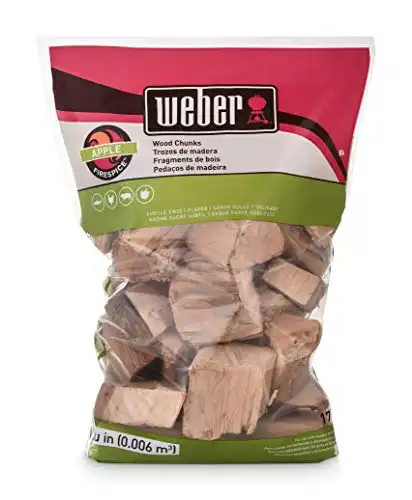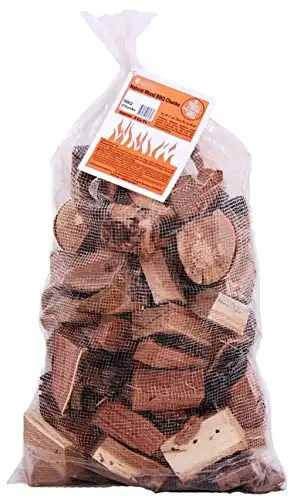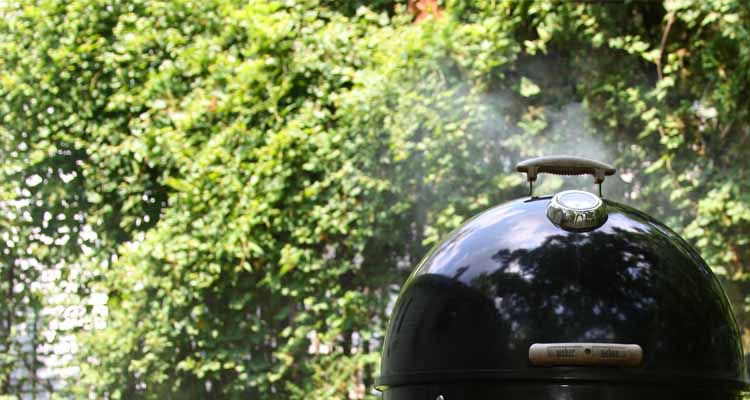These are The 7 Best Woods for Smoking Turkey (Plus a few to avoid)

Smoking is an excellent way to impart some serious flavor into the meat and an excellent cooking technique to cook a large bird like a turkey without drying it out.
Of course, the first choice you need to make when smoking a turkey is the kind of turkey you plan to use. However, coming in a close second is the kind of wood you’ll be using and what flavor you want it to impart.
Now personally, we prefer cherry wood with a touch of hickory for that mixture of sweet-smokiness and rich color.
However, what wood you use will depend on your personal taste, so we’ll be laying out all the options for you to choose from, rather than insisting on one right choice.
What are the best types of wood for smoking turkey?
As we’ve mentioned, different woods produce different flavor profiles that work nicely with turkey. Some of the most common choices include:
1. Pecan
One of the most common woods used in meat smoking, pecan provides an excellent combination of sweetness, smokiness, and sharpness to your turkey meat.
A little more robust than a lot of the fruitwoods we’ll discuss later, pecan has a depth of flavor and subtle nuttiness to it that is simply delicious.
Because of that depth of flavor, we don’t recommend you add any hickory to it, as you might with cherry or apple, the first time you smoke. The combination of two strongly flavored woods can add an unpleasant sour harshness to the turkey meat.
However, if, after your first smoke, you want a more robust smokey flavor, you can always add in a small amount of hickory shavings or mesquite to bump up the volume.
2. Maple
Maplewood adds a layer of earthy, spicy flavors to your smoked turkey without overpowering the taste of the meat.
If you’re using a rub that already has a lot of strong herbal flavors, then smoking over maple can help you to underline those flavors.
The sweeter smoke of the maple also adds an almost honey-like sweetness to the meat and gives it a lovely golden color.
3. Cherry
Cherry is a great smoking wood because it imparts a subtly sweet flavor that can be enhanced using rubs, marinades, or small amounts of other wood.
Our pellet grill turkey recipe uses cherry pellets as they impart a crowd-pleasing mild flavor.

As we’ve already mentioned, we like to pair cherrywood with hickory to add a greater depth of smoky flavor to the turkey meat.
The other great benefit of using cherrywood is that it will give your turkey a gorgeous red-brown coloring when it comes out of the smoker.
Apple
Apple is one of the more subtle woods on this list. Smoked over a long time, applewood provides a sweet subtle fruity taste to turkey that goes very well with the earthiness of the meat.
However, the flavor can really be very subtle indeed, meaning you’ll need to smoke your turkey for a lot longer to impart that flavor.
The only downside to this is that you’ll need to babysit your bird a little, keeping a spray bottle of water or apple juice on hand to make sure the meat doesn’t dry out.
4. Alder
A lighter alternative to some of the heavier woods we’ve got listed below, Alder imparts a rich smokey earthiness that isn’t quite as overpowering as hickory, oak, or mesquite.
As such, it can be used to empower some of the milder woods, such as apple or maple, or tone down some of the stronger woods, making it a good standby to have on hand.
5. Hickory
Hickory is an excellent traditional smoking wood that will find use in nearly all smokers. However, it is really quite strong, more often used in barbecue than it is in smoking poultry.
However, one of the beauties of smoking is that you don’t have to stick to one type of wood. You can cut your hickory with fruitwood like an apple or cherry, giving your turkey the rich smoky flavor and deep brown coloring without overpowering the taste.
6. Oak
More often used in European smoking, oak is very similar to hickory in that it provides a rich smoky flavor that can quickly become overpowering if not used sparingly.
One of the benefits of using oak is that red oak variants impart a very striking reddish tint to the meat and combine very well with cherrywood if used in small quantities.
7. Mesquite
Another wood that packs quite a punch, mesquite delivers the strongest smokey spicy flavors. Often seen in Southwestern states’ BBQ, mesquite can quickly overwhelm that taste of turkey and leave an unpleasant bitter taste if too much is used, so it’s best to avoid this one.
Are wood chips or wood pellets better for smoking turkey?
Choosing wood chips or pellets, or even logs or chunks, comes down to what smoker you have.

As you might expect, pellets work best in a pellet smoker, although they do work perfectly well in an electric smoker as long as they don’t fall through the holes in the wood tray.
Generally, electric smokers use wood chips, as do charcoal smokers, while the larger wood chunks or logs are used in offset smokers which have a far larger firebox.
While there isn’t much to choose between wood chips or wood pellets, getting the right wood size for your smoker will normally give you the best results.
Top tips for smoking turkey with wood
We’ve already written a whole article packed with great tips on how to smoke a turkey, but we’ll summarize some of the best ones for you here:
1. Spatchcock your turkey
Turkeys are big birds, so spatchcocking yours before it goes in the smoker has a number of benefits.

Firstly, the bird will cook more evenly, so the breast won’t dry out while the thighs and legs are cooking.
Secondly, you’ll have more surface area to apply rubs and absorb both the color and the taste of the wood smoke.
2. Use a digital thermometer
We say this in pretty much all of our cooking tips but always use a good digital thermometer.

You’ll get a much faster and more accurate read on the temperature of your turkey than using a traditional thermometer, which will make keeping it at the right temperature that much easier.
3. Use a drip pan
The main aim of smoking a turkey is to impart a depth of flavor to the meat. Adding a drip pan to your smokey catches the fat from the turkey and turns it back into flavorsome smoke.

To add more flavor you can always fill the tray with chopped-up onions, carrots, celery, herbs, and stock.
4. Skip the stuffing
If you don’t plan on spatchcocking your turkey, don’t stuff your bird. The stuffing will insulate the center of the bird, making it cook unevenly. This will result in your breasts drying out.
You’ll get better results from making your stuffing in the oven and serving it alongside your evenly smoked turkey.
5. Keep your smoker closed
We know smoking a big bird is exciting, and you’ll want to keep checking to make sure that everything is going ok.

But the best way to ensure that your turkey gets the best, most even smoking, and the best flavor is to keep that smoker door shut unless you absolutely need to open it.
FAQ
So that you’ve got all the information you need, here are the most frequently asked questions about what woods to smoke a turkey with and their answers:
Q: Is mesquite bad for smoking turkey?
A: Mesquite is a very strongly flavored wood that can easily overwhelm the taste of the turkey. We recommend you keep it for more robust BBQ meats and stick to lighter woods for smoking turkey.
Q: Which woods should you avoid for smoking turkey?
A: We would generally recommend avoiding the more strongly flavored woods like mesquite, oak, and hickory when smoking a turkey. That being said, if you do want to use them, you can tone them down by cutting them with fruitwoods, maple, or pecan.
Q: Is it safe to smoke a turkey with wood?
A: Absolutely, as long as you’re using your digital thermometer to make sure all parts of the smoked bird come up to the USDA minimum temperature of 165℉.
Q: How often do you add wood when smoking a turkey?
A: Unfortunately, there isn’t a hard and fast answer to this one. A good rule of thumb is to change the chips every five to six hours, but that will depend on your type of smoker, the weather conditions, and the type of wood you are using.
Wrapping up
A well-smoked turkey is a thing of beauty, with the wood smoke adding both a depth of flavor and color. While wood choice is important, don’t forget to use a good turkey rub, and if you want to go all out, give your turkey a nice bath in our best turkey brine recipe.









